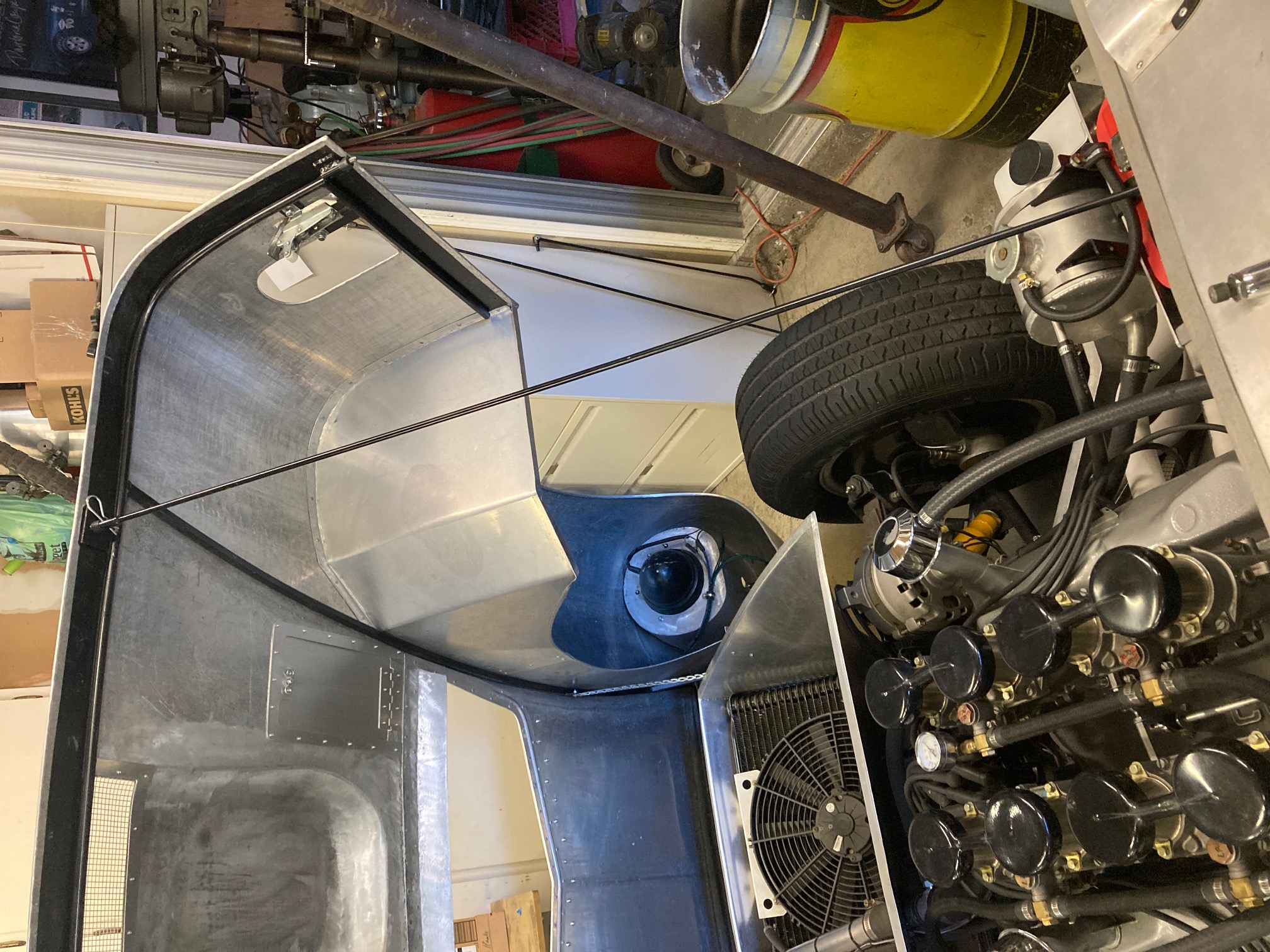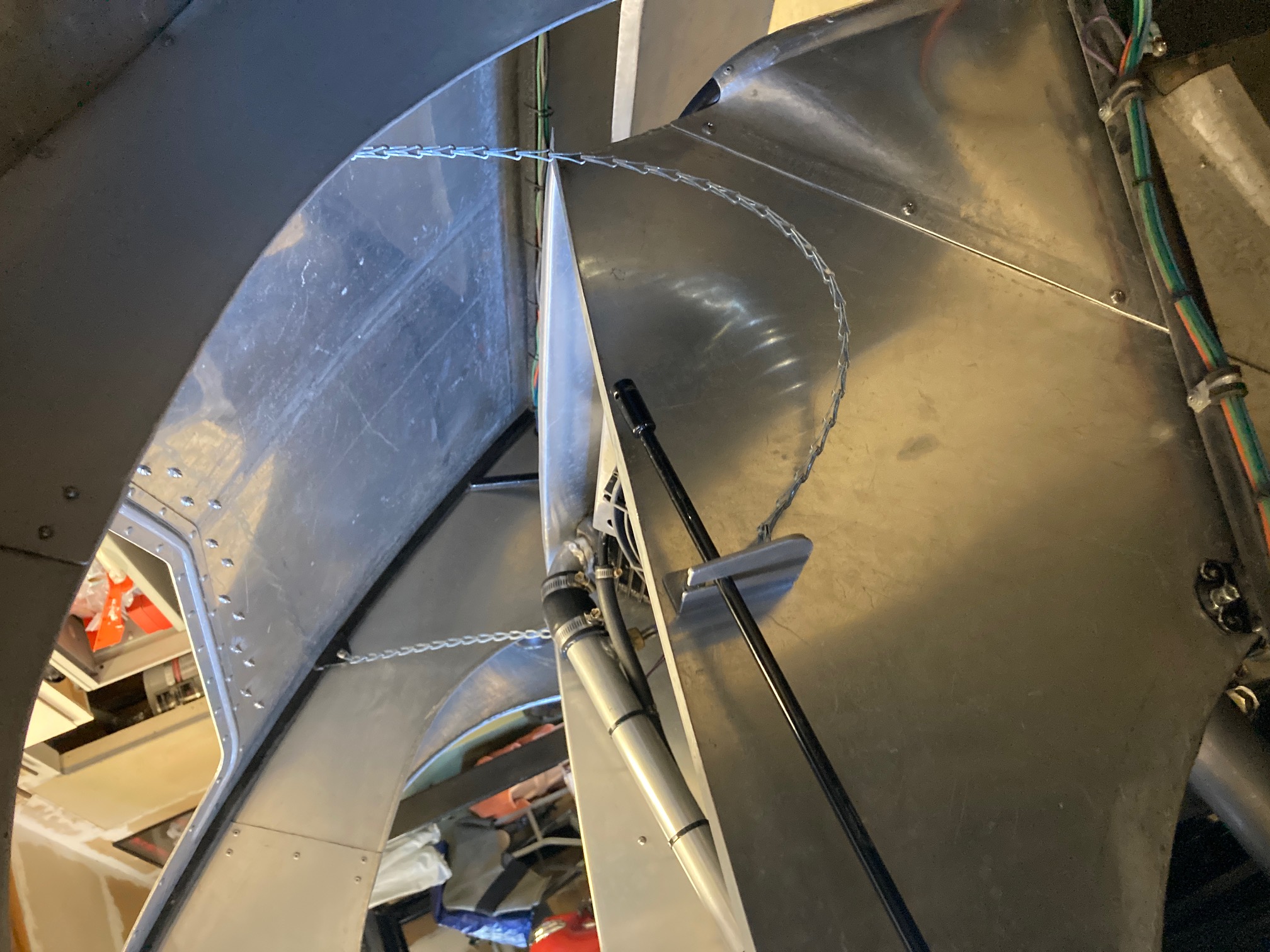Welcome to Our Garage
Daytona Coupe, 289 and 427 Cobras
-41-
Daytona Coupe Cobra -
Hood Prop Rod and Front License Plate
Small victories
Every project needs to have a few easy victorys. The following relatively simple tasks fall into that category even though they actually took a little longer than a single day to complete.
Hood prop rod
The original Daytonas use a pair of small link chains connected from the sides of the radiator outlet air duct to the hood support structure to keep the hood from tipping to far forward when in the raised position. Good idea and no doubt more than adequate for a race car.
For a number of years I had used a couple of pieces of flexible wire to perform the same function on my Daytona. They worked fine to keep the nose off the ground when it was raised. However, there was no provision to keep the hood from inadvertently slamming shut if bumped and more than once I had to move very quickly to keep that from happening.
How to solve the dropping hood problem while still retaining a correct period look. Again borrowing from the 289 and 427 Cobra designs with a slight modification to solve the Daytona slamming issue. The Cobra roadsters used a 5/16" diameter rod, hinged at the cowel and manually pivoted up to a fit into a small notch at the rear edge of the hood. The rod was stored by clipping it into a small bracket mounted to the passenger side inner fender wheel arch. The "prop" rod on the roadsters solved the holding the hood up, but still had a problem with the hood droping shut due to a sudden gust of wind (or being a little careless when working on the car with the hood up).
The original Daytona hood incorporates two 5/16" locating pins welded to the frame at the cowel end of the hood. Their function is to accurately locate the hood when it is closed. They also provide a great solution for securing the hood in an open position. A small hole was drilled through the locating pin to match with a corresponding hole drilled into a roadster style prop, a removable retaining clip was added and the problem was solved.
Yes, the pin must be manually inserted and removed and the rod lowered when not in use. But, in my mind, the "prop rod" solution is in keeping with the simple and functional design philosophy aspect of the original Daytonas while maintaning the heritage of the Cobra roadsters. A much more correct look for the Daytona.


Front License plate
Although the state of California has "required' a front license plate on vehicles for many years, it has not been strictly enforced. More recently law enforcement officers have begun to more routinely cite vehicles without the front plate. Obviusly the Daytona did not originally have a front plate, but I simply didn't want to try explaining that to a police officer.
Becasue aerodynamics was the main design consideration of the original cars, no provisions were made for mounting a front plate on the Daytona. Figuring out how to install one on my replica was a bit of a head scratcher. Two possibilities came to mind; the original 427 Cobra had a swing down front plate that would rotate to a more horizontal orientation based on air flow into the radiator inlet and the DB4 Aston Martin staring in several James Bond movies which featured a rotating license plate contraption. The 427 approach won. (I really didn't need to explain the Bond concept to the police.)
Although not perfected yet the following photo shows the basic concept of my Daytona front plate. It does fill a significant amount of the radiator air intake area in the nose, but it is on a hinge which allows it to pivot down with increase air flow conceptually similar to the 427 Cobra approach.
The following photos show front license plate bracket version 1.0. I'm still experimenting with the strength of the "pop up" springs, but the basic idea seems like it will work. Now all I need to find is an appropriate license plate frame and get a more meaningful personalized license number.
Plate "Up"

Plate "Down"
